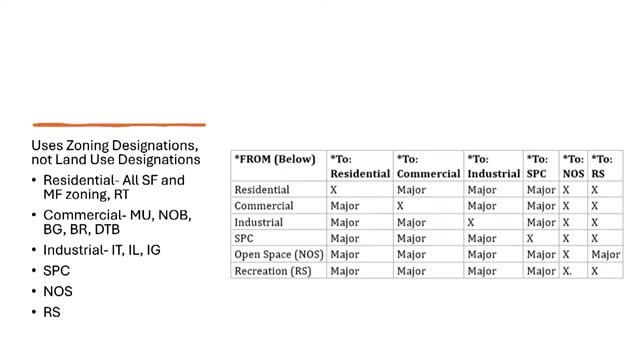New rules could unleash housing boom without major amendments
August 22, 2024 | Prescott City, Yavapai County, Arizona
This article was created by AI summarizing key points discussed. AI makes mistakes, so for full details and context, please refer to the video of the full meeting. Please report any errors so we can fix them. Report an error »

During a recent government meeting, officials discussed significant concerns regarding land use regulations and their implications for residential development. A key point raised was the potential for substantial increases in residential density without triggering a major amendment to existing plans. Specifically, it was noted that a property could transition from one dwelling unit per acre to as many as 32 units per acre on a ten-acre parcel, resulting in the possibility of developing 320 residential units without the need for extensive review.
Participants emphasized the need for a more nuanced approach to land use amendments, suggesting that the size of the property should be a determining factor in whether a major amendment is required. This proposal aims to ensure that significant changes in density are adequately reviewed to prevent unintended consequences in community planning.
Additionally, the discussion highlighted the relationship between land use categories and zoning regulations, noting that higher intensity zoning typically permits lower intensity uses. This means that residential developments could be established within commercial zones without necessitating a rezoning process, further complicating the regulatory landscape.
The meeting underscored the importance of revising the criteria for major amendments to better reflect the complexities of land use and zoning, with officials agreeing on the need for a more detailed matrix to guide future decisions. The proposed changes aim to enhance oversight and ensure that community interests are adequately protected as development pressures increase.
Participants emphasized the need for a more nuanced approach to land use amendments, suggesting that the size of the property should be a determining factor in whether a major amendment is required. This proposal aims to ensure that significant changes in density are adequately reviewed to prevent unintended consequences in community planning.
Additionally, the discussion highlighted the relationship between land use categories and zoning regulations, noting that higher intensity zoning typically permits lower intensity uses. This means that residential developments could be established within commercial zones without necessitating a rezoning process, further complicating the regulatory landscape.
The meeting underscored the importance of revising the criteria for major amendments to better reflect the complexities of land use and zoning, with officials agreeing on the need for a more detailed matrix to guide future decisions. The proposed changes aim to enhance oversight and ensure that community interests are adequately protected as development pressures increase.
View full meeting
This article is based on a recent meeting—watch the full video and explore the complete transcript for deeper insights into the discussion.
View full meeting
